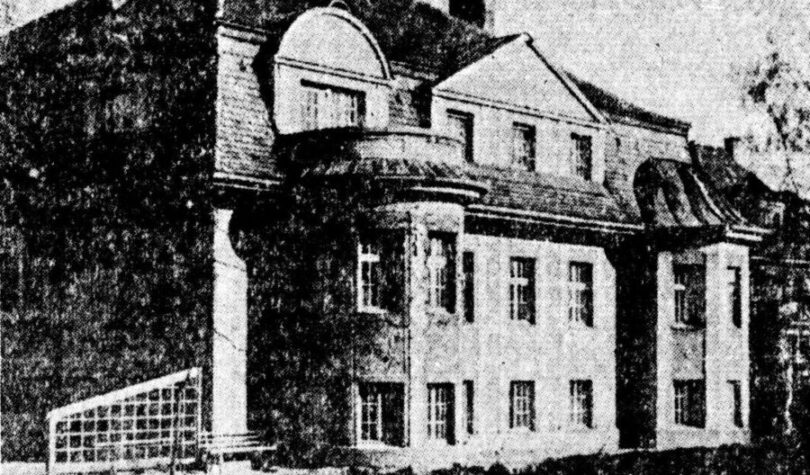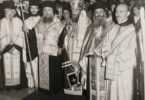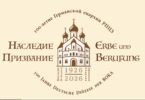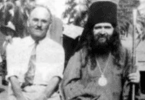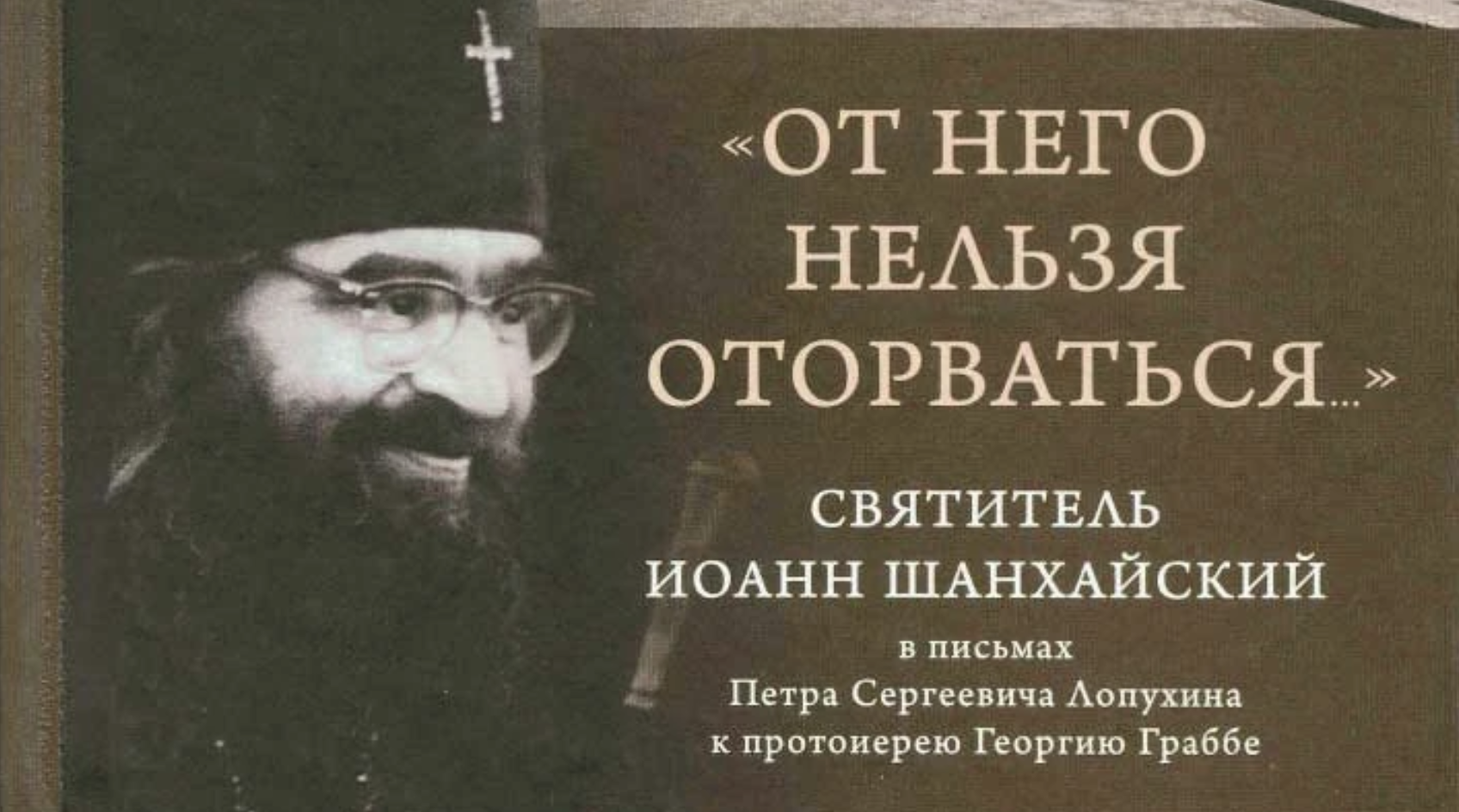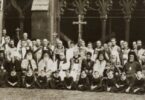Part II, Chapter 3
The Years of the Munich Emigration (1945-49)
and the Transfer of the Synod of Bishops to the United States
The expulsion of the Church Abroad from Eastern Europe effectually deprived it of the Serbian Patriarchate’s material support. The Serbian Patriarchate, however, remained in communion with the Church Abroad after 1945, thereby becoming the only autocephalous local Church which maintained relations with both the Church Abroad and the Patriarchal Church. [1] On the relationship with the Serbian Orthodox Church, cf. Part V, Chap. 3. The re-entry of the Moscow Patriarchate into the church life of the West and the re-establishment of relations with the Orthodox Sister Churches and the non-Orthodox Christian Churches led to a situation in which more attention was devoted to the ecclesiastical developments in Russia in the years after 1945. The Patriarchate used these developments to force the far-reaching isolation of the Church Abroad by making the severance of relations with the Church Abroad a precondition for the establishment of relations with these other Churches. The interest in the ecclesiastical developments in the Soviet Union, and the diminution of involvement with the ecclesiastical developments in the emigration, can clearly be seen in the ecclesiastical and academic newspapers and periodicals of the years both before and after 1945.
Thus, the journals Irenikon, Russie et Chrétienté, and the International Church Journal had in their chronicles been reporting on developments in the ecclesiastical emigration in detail for years, only touching on the Patriarchal Church and the religious situation in the Soviet Union. After 1945, the opposite was the case, until the Church Abroad almost disappeared from their editorial conscience. This was manifestly achieved for example, in the Shepherd’s Correspondence (Herderkorrespondenz). From 1945-55, there were up-to-date and extensive reports on the Church Abroad; thereafter, one seldom finds even a mention of that Church Abroad.
The catastrophic economic situation in Western Europe – especially in Germany and Austria, both of which at first received the mass of émigrés – caused the majority of them to try to emigrate overseas. With the outbreak of the Cold War and the Korean War, and with the fear that there would be a new war between the Soviet Union and the Western Powers, this emigration took on a mass character. Whoever was not forced to remain in Europe on grounds of health or age emigrated abroad. Most of the refugees went to the United States or to South America. In New York alone from 1950 to 1955, there were about 200,000 Russian refugees. The Church leadership also followed suit in 1950, transferring its headquarters to the United States, where the numerically largest communities and the most important church institutions were located.
Metropolitan Anastasius spent from September 1945 until April 1946 in Switzerland, while the Synodal administration remained in Munich. From Geneva, in the subsequent weeks, he made contact with many communities, especially in North America, where since 1943 the proponents of autonomy had again been winning influence with the goal of separating from the Church Abroad. Differences opinion came about in the analysis of the ecclesiastical events in the Soviet Union since 1943. Whereas the Council of Bishops in Vienna had condemned the election of Metropolitan Sergius as Patriarch as uncanonical, Metropolitan Theophilus, under the influence of the laity, had decided to acknowledge the election as “an accomplished fact,” and, with the consent of a regional council of North American bishops, began commemorating the name of the newly-elected Patriarch before that of Metropolitan Anastasius in October of 1943. This was tantamount to a recognition of Sergius as the head of the whole Russian Church. [2] 2. Polsky, Kanonicheskoe polozhenie, p. 164.
The Metropolia sent a delegation to the election of Patriarch Alexis, which was also supposed to negotiate the matter of the Moscow Patriarchate granting autonomy for the Metropolia. [3] Ibid., p. 165. The negotiations with the Patriarchate, which lasted almost two years, ultimately failed, because the latter did not want to grant the degree of autonomy demanded by the Metropolia, which more closely resembled autocephaly. [4] Seraphim, Church Unity, pp. 53-58; Severnoi Ameriki, p. 120ff. At the Council of Bishops of the North American Diocese in December of 1945, four of the eleven bishops protested against the Moscow Patriarch: Archbishops Vitalis and Tikhon, and Bishops Joasaph and Hieronymus. Two other bishops, Macarius and Alexis, left the Metropolia in January of 1946 and joined the Patriarchate. [5] Polsky, Kanonicheskoe polozhenie, p. 165. In November of 1946, the Seventh All-American Local Council met in Cleveland. It decided, by a vote of 187 to 61, that, in the event of a failure in the negotiations with the Patriarchate, the Metropolia should maintain an autonomous status. There were additional discussions within the Patriarchal faction over the degree of autonomy from Moscow: no agreement could be reached on whether the Patriarch should be the canonical or spiritual head. The opponents of the resolution rejected any form of recognition of the Patriarch and wanted to recognize only the jurisdiction of the Church Abroad. At the Council of Bishops, which was supposed to confirm the decisions of the Cleveland Council, the adherents of the Church Abroad had the majority. This being so, Bishops Leontius and John left the assembly, thereby preventing a ballot from the Council of Bishops.
After the Council of Cleveland, Metropolitan Theophilus feared that there would be a schism within the Metropolia. The Bishops of the Church Abroad rejected the decision of the full assembly as uncanonical because it did not receive the consent of the Council of Bishops. For this same reason, the Church Abroad also viewed the Cleveland Council as uncanonical. On March 28, 1947, Archbishops Vitalius, Tikhon, Hieronymus and Joasaph, and Bishop Seraphim (Ivanov), were excluded from the ranks of the clergy of the Metropolia. Thus, a new schism in North America began, which culminated in 1970, with the Moscow Patriarchate’s granting of autocephaly to the former Metropolia. It seems that Metropolitan Theophilus had brought about this schism through his own timidity. His behavior towards Metropolitan Anastasius in the years 1945-47 indicates that he was an adherent of unity with the Church Abroad. However, he was too much under the influence of a circle which most strongly supported autocephaly. Metropolitan Theophilus was also not strong enough as a theologian to refute the arguments of this circle. Metropolitan Eulogius had characterized him in 1936 as a “sort of provincial cathedral priest”, who would rather avoid conflicts and was prepared to give in to the majority. [6] Seraphim, Church Unity, p. 54. The fact that Metropolitan Theophilus also accepted Metropolitan Anastasius as head of the Church Abroad after 1945 and did not question the authority of the Munich Synod has already been presented in detail. [7] Manuchina, Evlogy, p. 638.
The developments in North America from 1943 through the summer of 1945 can be traced to the interruption in the relations between the Synod and the North American Metropolia. The different evaluations of the elections of Metropolitans Sergius and Alexis as Patriarch have shown this. The regrettable break in North America, which already hovered over the Council of 1946, required an administrative reordering a few months later, which affected almost all dioceses. Many of the bishops and priests who went overseas had to share the fate of their faithful, and were, therefore, very close to them. Thus, many of the new refugee communities the world over were entrusted to the priests of the second emigration. In comparison with the first emigration, however, they had the advantage of drawing on the experiences of the old emigration in setting up new dioceses and parishes.
Hope for an improvement in living conditions over those in Germany and Austria, where millions of their own refugees needed help, was a decisive factor in the desire to emigrate overseas.
At the Synod in Munich, a bureau of emigration was set up, which helped the refugees in an advisory capacity. Those working there helped fill out travel papers and provided information on the countries which were accepting the refugees because many of the would-be émigrés had no idea about the political, economic, cultural, or climactic conditions of the countries that would receive them. This was because in the Soviet Union there were few reports about life abroad, and where any did exist, they were purely negative. The bureau not only provided information but also tried at the same time to dispatch priests with the groups of refugees, who would, in turn, organize church life in their new homeland. The parishes were few and far between, especially in Australia and the Far East, where the refugees from the Far East were heading. Most of the refugees were unable to join the pre-existing communities but rather had to establish new parishes and churches. Australia offers a typical example: Before 1945, there were only two communities, in Brisbane and Sydney. When Archbishop Theodore (Rafailsky) died in 1955, there were 12 parishes with their own churches, and the foundation of the convent was imminent. [8] Part II, Chap. 2. At present, the diocese has over 25 parishes.
To better coordinate church work and the supervision of these new communities, several new dioceses were also created. In 1946, Bishop Theodore was appointed head of the Australian diocese. However, he only assumed his duties in 1948 due to difficulties with his visa. Bishop Seraphim (Ivanov) was supposed to assume the rule of the Chilean diocese; instead, he became abbot of the St. Job Brotherhood in the United States. The Diocese of Caracas and Venezuela was set up, over which Bishop Eulogius (Markovsky) was supposed to preside. However, he went to the United States as a member of the Synod. Bishop Theodosius (Samoilovic) took over the administration of the South American communities in 1947, because the head of the Argentine communities, Archpriest Izraztsov, had joined the North American Metropolia (after the schism of 1946-47). To help Archbishop Theodosius, a diocese of Paraguay was set up in 1947 under the leadership of Bishop Leontius (Philipovich). Argentina became a separate diocese in 1947, under the leadership of Archbishop Panteleimon (Rudik). Thus, in South America, there were separate dioceses in Brazil, Argentina, Paraguay, Chile, and Venezuela. [9] Russ. Prav. Ts., 2, p. 1318ff. In North America, a renewed schism by the Metropolia necessitated the creation of the Synod’s own dioceses. As a result, the pre-1935 tradition was revived: Archbishop Vitalius (Maximenko) became head of the Dioceses of North America and Canada, which consisted of the following dioceses: Eastern America and Jersey City under Archbishop Vitalius; Western America and San Francisco (with the communities in Alaska) under Archbishop Tikhon (Troitsky); Detroit and Flint under Archbishop Hieronymus; and Bishop Seraphim was abbot of Holy Trinity Monastery. In Canada, there were only two dioceses: Edmonton and Western Canada under Archbishop Joasaph (Skorodumov) and Montreal and Eastern Canada under Archbishop Gregory (Boriskevich). In 1950, Archbishop Panteleimon was transferred to Canada and Archbishop Joasaph to Argentina, because the former had to leave Argentina at the request of the authorities. The Vicariate of Vienna, which had existed since 1938, became an independent diocese in 1946. Archbishop Stephen (Sevbo) took over its administration. With this, the administrative rearrangement came to a close. It had been necessitated by the establishment of numerous new communities overseas, where hitherto hardly any Russian émigrés had lived. In Europe, the creation of the Diocese of Vienna and Austria was justified by the fact that after 1945, 100,000 Russian refugees were living there, cared for by 32 priests. [10] Russ. Prav. Ts., 2:1001. In Germany, three vicariates (Bavaria, Hesse and Northern Germany) were created. Also, for the Belorussian and Ukrainian refugees, their own bishops were appointed: Archbishop Benedict for the Belorussians; Bishop Eulogius for the Ukrainians. [11] Seide, Die Russisch Orthodoxe Kirche in der BRD, p. 173.
It was not only the laypeople who had to be cared for; through expulsion and flight, almost all the monks and nuns who were living in Eastern Europe, China, Manchuria, and Israel, had become homeless. The difficulty in accommodating this group of people lay in finding appropriate buildings with sufficient space to house them, and a financial basis for the continuing existence of these monastic communities. In most cases, this meant that the monastery would also have to have land so that the community could at least have the means to provide itself with food. And not only refugee monks and nuns had to be accommodated, but also the laypeople, who desired to take up the monastic life.
The fate of the St. Job Brotherhood at Ladomirova well illustrates the difficult situation confronting the monks and nuns. In the summer of 1945, there were forty-nine monks in the brotherhood, who during the flight were joined by monks from the Soviet Union (e.g. Archimandrite Agapitus, later Bishop of Goiana) and new candidates (e.g. Nicholas Gamanovich, later Bishop Alypius). A building was quickly found for the brotherhood in Munich-Obermenzig, which had enough room for the cells and a small church, though the monks were still had to face the problem of finding ways to support themselves. The small plot of land of 12,000 square meters that belonged to the monastery was, of course, insufficient to feed forty-nine men. The monks planted fruit trees, berry bushes, and vegetables, but the crop was too small. The brotherhood was also unable to live off of the proceeds of the printing press, because the refugees, who were for the most part completely without means, had first to satisfy other needs. Thus, eighteen monks, having obtained Swiss travel passes, left for the United States and Palestine, where they joined the Ecclesiastical Mission which shortly thereafter lost its territory in Israel. Other monks went to France, where they hoped to found a new monastery under the direction of Hegumen Nicodemus (Nagaev) and Hieromonk Panteleimon (Rogov). A third group went with Bishop Leontius to Paraguay intending to establish a monastery there. All told, over thirty monks had to leave the monastery. The attempts in France and Paraguay failed due to a lack of financial possibilities because the money to purchase or rent land was lacking. The majority of the monks took over the care of the communities in their new homelands. [12] Seide, Die Klöster, pp. 103-107. In Munich, only between eight and ten monks ultimately remained behind; their main responsibility was to support the Synod before its resettlement in the United States.
The situation with other monasteries founded after 1945 was similar. Today it is hardly possible to envisage what privation and need these monks and nuns endured at this time when there were no donations or outside support. Today, for example, if one visits the Novo-Diveevo Convent outside of New York City and views the whole layout, with its numerous new buildings for the old age home and the sisterhood, and wanders through the extensive properties, including the cemetery and the park, it is hard to imagine that at one time the nuns were in such dire need that Fr. Adrian (later Archbishop Andrew) had to sift through the refuse from the nearby weekly market for food for the sisterhood. When he once noticed a fishmonger who wanted to throw away fish because it was crushed, Fr. Adrian implored him to give him the fish. When asked why he wanted it, Fr. Adrian explained the difficult straits of the sisterhood to the fishmonger, who thereafter promised to give the nuns fish free of charge as long as he remained in business. [13] Ibid., pp. 136-140. The situation was similar to many other émigré communities, who wanted to build churches and chapels in their new homeland. Priests were generally available to organize church life. The number of refugee priests is not known precisely, though it must have been several hundred. After the lack of priests in the late 1930s, the Church leadership was again able to assign clergy to all the parishes.
Yet the experiences of the past had shown that they had to think about the education of their own priests in order to be prepared for the future. After the loss of the St. Vladimir Institute in Harbin with its Theological Faculty, St. Vladimir’s Seminary in New York and St. Tikhon’s Seminary in Pennsylvania – the latter two through the Metropolia Schism, – the Church Abroad no longer had any educational institutions for the training of future priests. With the Decree #5603 of 16 August 1948, the Synod resolved to establish a seminary at Holy Trinity Monastery in Jordanville, which was to be directed by Archbishop Vitalis and Bishop Seraphim. That very year, the seminary was opened and first began its curriculum of studies as a school for the education of the monastery’s young monks. This school quickly developed into the seminary for the theological education and preparation of future priests. In 1956, the State University of New York recognized and certified the Seminary, by its academic qualifications, with the right to grant the degree of Bachelor of Theology. In the more than forty years of its existence, well over 200 priests have been educated there, and at least as many others have graduated, who later pursued other careers. [14] Cf. Part IV, Chap. 4.
Barely five years had passed since the flight from Yugoslavia. It had seemed that the Church Abroad would be unable to recover from the heavy losses of the years 1944-49, yet the Church leadership, with the support of the faithful, succeeded in reorganizing ecclesiastical life. To build up parishes in South America and Australia, as well as in the United States and Canada, bishops and priests were sent there, because the majority of the faithful had emigrated to these countries. By 1953, 214,000 Russian émigrés had entered the United States alone. [15] Tserk. Zhizn´ (1954) 5-6, p. 1. The altered situation had made it necessary to create new dioceses, which for the most part were ruled by bishops who had remained true to the Church Abroad after 1945 or had joined the Church Abroad after their own escape. Excluding the two bishops of the “Autocephalous” Belorussian and Ukrainian Churches, not one refugee bishop joined an émigré Church other than the Church Abroad. This also applied to most of the priests and faithful, who saw the Church Abroad as the true heir of the Russian Church. The rebuilding of Church life, including the founding of churches, chapels, monasteries, church schools, social institutions, printing presses, and a seminary was accomplished in most cases through the efforts of the faithful. Yet the fact that Church and government institutions in the countries receiving the émigrés, as well as international organizations, rendered the émigrés so much support also warrants mention here. In the early years, the Roman Catholic Church was particularly helpful in giving material support; the Lesna and Novo-Diveevo Convents are located, for example, on the grounds of former Roman Catholic convents. Thus, it is also thanks to this outside support that the émigrés in the West were able to build up their existence anew.
A large portion of the credit for this rebuilding is owed to Metropolitan Anastasius, who enjoyed the great respect not only of the faithful in his own Church but also of the other Christian churches in the host countries. [16] Anastasius, Sbornik, p. 24. Despite his advanced age – in 1943 he turned 70 years old – the First Hierarch never tired of consoling the refugees and awakening in them hopes for a brighter future. He visited the refugee camps with the Wonderworking Kursk-Root Icon of the Mother of God, the heavenly protectress and patroness of the Church Abroad, celebrated the divine liturgy and distributed the sacraments. In the Synodal Church in Munich, in which the Kursk Icon was enshrined, Metropolitan Anastasius celebrated the divine liturgy daily. Many of the émigrés went there before leaving Germany or Austria, to entreat the protection of the Mother of God. In his sermons and epistles, the Metropolitan repeatedly warned against the dangers of Communism, exhorted his faithful to thank God for the freedom they had regained, and prayed for the oppressed Church and the faithful in the homeland. [17] Cf. the Christmas and Paschal Missives of the Metropolitan in Sbornik, pp. 57-120. In 1946 and 1948, the Metropolitan celebrated two anniversaries: 1946 marked the 40th anniversary of his consecration to the episcopate and his 10th anniversary as First Hierarch, and 1948 marked the 50th anniversary of his monastic tonsure. On the occasion of these two jubilees, he was awarded the highest honors. For his service to the Church Abroad, as had his predecessor Metropolitan Anthony been, he was granted the title “His Beatitude” and the right to wear two panagias along with the pectoral cross, the highest ecclesiastical honor. [18] Ibid., p. 26; Tserkovnaya letopis’ (Paris: 1946) 3, pp. 7-45.
Except for the communities that existed before 1945, the church life of that year in Germany and Austria was completely transferred to the refugee camps. There was a total of nearly 20 such camps, of which the largest in size were in Hamburg, Kassel, Hannover, Heidelberg, Kempten, Munich, and Salzburg. [19] Ibid., pp. 45-50. In them, there lived up to 10,000 displaced persons, mostly workers from the East (Ostarbeiter). Within a very short period of time, an extensive political, cultural and church life developed among the refugees. This arose from political and national groups, who, employing the crudest means, printed journals, books, brochures, and programs, in which they presented their political, economic and cultural-political ideas. The instruction was provided for the small children and the youth. In the larger camps, such as Salzburg, Munich, and Kassel, a regular school system was set up, which extended from kindergarten through elementary and secondary levels. By the summer of 1946 in West Germany alone, seven Russian high schools and ten elementary schools had been established. Refugee teachers taught the classes. The goal of these educational institutions was to provide the students with a diploma, which would later enable them to continue their education. A completely new subject of instruction at these schools was religion and catechism, which was taught by the camp clergy because there were almost no qualified religious instructors among the refugees. In general, the schools and lesson plans were set up very much along church lines, because the Christian and humanitarian world view took the place of Marxist-atheist indoctrination Much was also done for the education of adults. There were courses in land-surveying, business and industry, electronics, motor transport, agriculture, architecture, tailoring, music, theatre, ballet and much more. There were also language courses: English, German, French, and Spanish. [20] Memorandum sur la situation.
The Church organized religious, catechetical and missionary courses and church choirs. Young people and adults attended these in equal measure. They need to deepen Orthodox Christian ideals was especially pressing in the years after the war, when, on account of the horrible experiences of the preceding years and the privation and misery which surrounded them, many people sought consolation in the Faith and in Christianity. The desire to enter into the service of the Church or into a monastic community was also particularly pronounced. Yet much was done also in the “old communities.” Churches had been in part destroyed or damaged during the War and required repair. Building plans long in abeyance were again taken up because the communities had grown through the influx of refugees.
A particularly joyous event of these years was the consecration of the Church of St. Job in Brussels, which had been built as a memorial to the family of the last Tsar and all the victims of the Russian Revolution and its aftermath. The planning and building of the church took more than over twenty years before the church, built in northern Russian style, with blue, 24-meter high onion domes visible from afar, was finally able to be consecrated. The consecration took place on 18 Sept./1 Oct. 1950. Metropolitan Anastasius, Bishops Nathaniel and Leontius (Bartoshevich), and numerous clergy and representatives from the Romanov family took part. Since then, the Church has been subjected directly to the First Hierarch of the Church Abroad. In view of the Church Abroad’s canonization of the victims of Communism in 1981, this church has taken on a particular significance. [21] Tserkovnaya letopis’ (Paris: 1946) 3, p. 55.
In the autumn of 1949, the Synod of Bishops began to plan the move from Munich to the United States, because the majority of the faithful had, in the meantime, gone there to live, and most of the Church’s institutions were located there, including several monasteries, the seminary at Jordanville, and an array of social and charitable institutions. Also, since the schism of the American Metropolia, it had become ever clearer that the Church Abroad had a serious competitor not only in North America, for the Metropolia was also trying to entice communities outside of North America – in South America and Japan, Southeast Asia and Australia – into joining its jurisdiction. In order for the Church Abroad to retain the mass of émigrés who had emigrated to the New World in these years, it was preferable for the central ecclesiastical administration and the First Hierarch to move to the United States. Such a move threw into the scales the tremendous authority which the Synod, and even more importantly Metropolitan Anastasius, possessed, the more so to increase the advantage of the Church Abroad over the Metropolia.
* The numbering of endnotes is off by 2 – the 1st two are in the previous chapter.
References
| ↵1 | On the relationship with the Serbian Orthodox Church, cf. Part V, Chap. 3. |
|---|---|
| ↵2 | 2. Polsky, Kanonicheskoe polozhenie, p. 164. |
| ↵3 | Ibid., p. 165. |
| ↵4 | Seraphim, Church Unity, pp. 53-58; Severnoi Ameriki, p. 120ff. |
| ↵5 | Polsky, Kanonicheskoe polozhenie, p. 165. |
| ↵6 | Seraphim, Church Unity, p. 54. |
| ↵7 | Manuchina, Evlogy, p. 638. |
| ↵8 | Part II, Chap. 2. |
| ↵9 | Russ. Prav. Ts., 2, p. 1318ff. |
| ↵10 | Russ. Prav. Ts., 2:1001. |
| ↵11 | Seide, Die Russisch Orthodoxe Kirche in der BRD, p. 173. |
| ↵12 | Seide, Die Klöster, pp. 103-107. |
| ↵13 | Ibid., pp. 136-140. |
| ↵14 | Cf. Part IV, Chap. 4. |
| ↵15 | Tserk. Zhizn´ (1954) 5-6, p. 1. |
| ↵16 | Anastasius, Sbornik, p. 24. |
| ↵17 | Cf. the Christmas and Paschal Missives of the Metropolitan in Sbornik, pp. 57-120. |
| ↵18 | Ibid., p. 26; Tserkovnaya letopis’ (Paris: 1946) 3, pp. 7-45. |
| ↵19 | Ibid., pp. 45-50. |
| ↵20 | Memorandum sur la situation. |
| ↵21 | Tserkovnaya letopis’ (Paris: 1946) 3, p. 55. |

